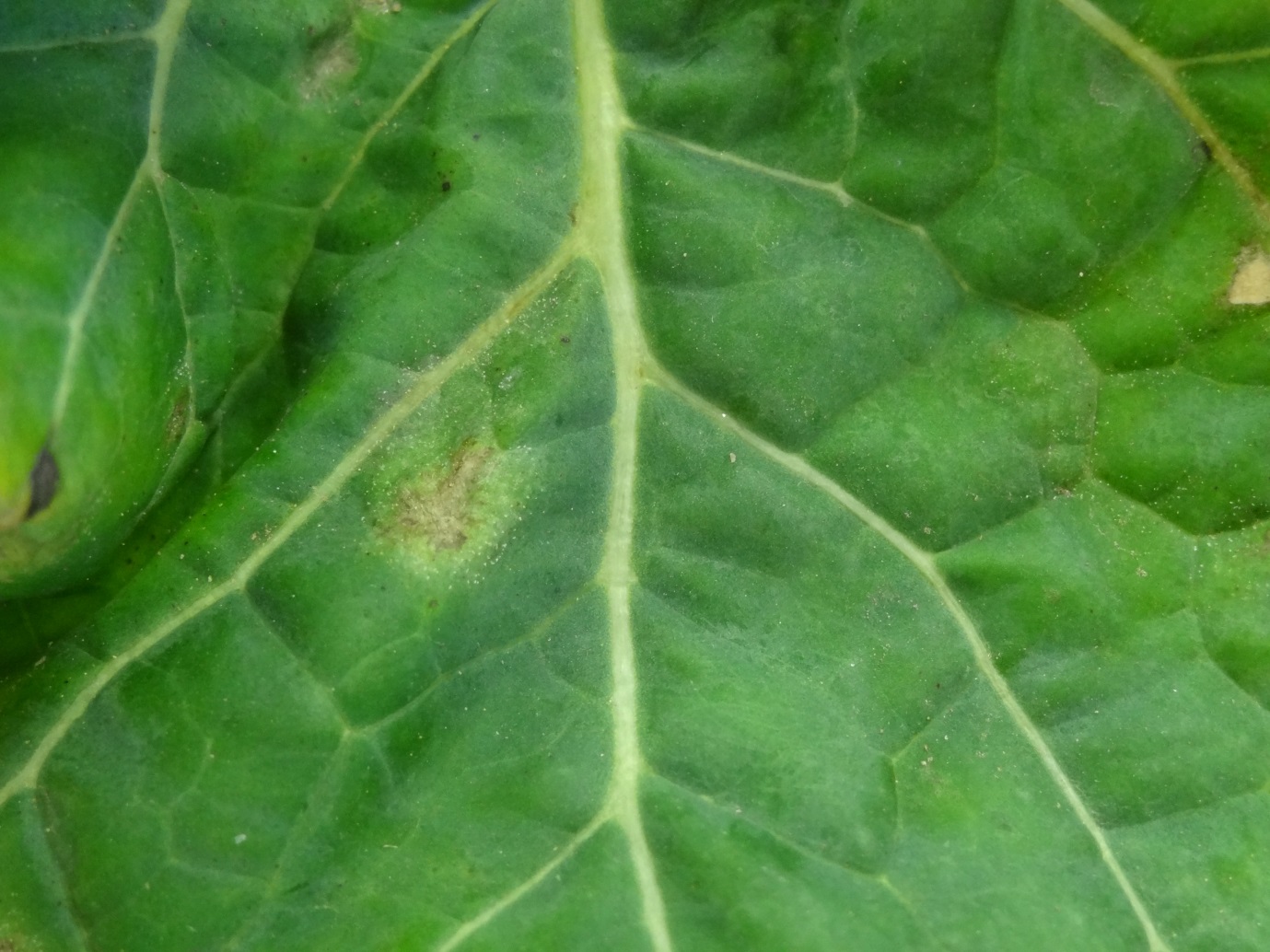Light leafspot
Light leaf spot is the main foliar disease to attack winter oilseed rape in the north of Britain. It can infect leaves, stems, flower buds and pods of winter oilseed rape. Spring oilseed rape is not affected but brassica vegetables can be affected.
The short period of time between harvest and sowing in Scotland results in leaf infection soon after sowing, but initially, plants are symptomless. During November/December, pale green or water-soaked lesions appear on older leaves, these lesions become brittle and crack easily when bent. In December/January symptoms become visible as large (1cm diameter) spots, fawn in colour with a crust appearance.
Durning wet weather spore masses or spore droplets are produced on both surfaces of the leag around the outer edge of lesions, often with apparently healthy green tissue. The spore droplets have an appearance of salt grains on the surface of the leaf and are diagnostic of the light leaf spot fungus.

The presence of light leaf spot fungus can slow down the growth of leaves within the area of infection without affecting the rest of the leaf, resulting in the curving of leaves around the point of infection.
Infection of the stem results in small brownish, purple lesions often with black speckling around the edge. This can be confused with bruising caused when stems rub together. As the stems start to extend in spring, the lesions expand and by June can be several centimetres in length.
In severe cases stems split vertically along the lesion and occasionally break. These splits can allow access to other pathogens such as botrytis grey mould and sclerotinia.
Sign up to the FAS newsletter
Receive updates on news, events and publications from Scotland’s Farm Advisory Service
